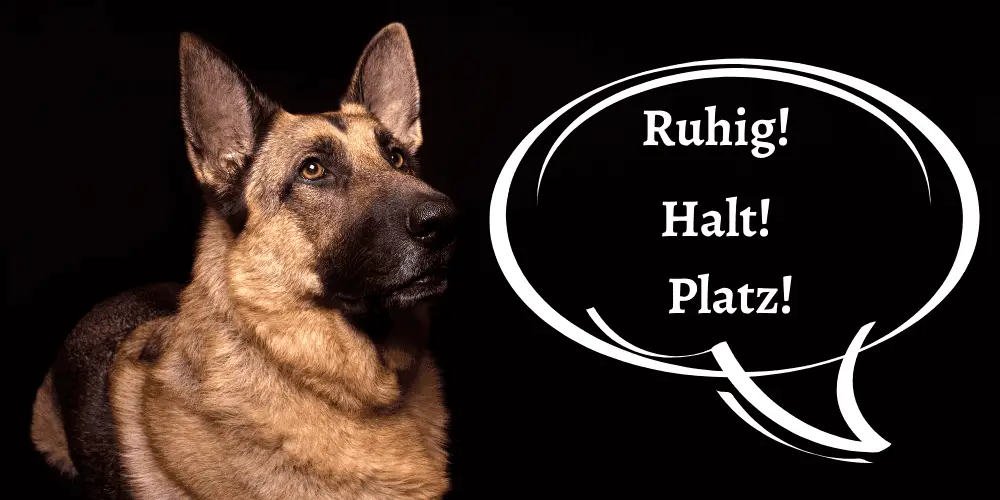There are benefits to be had by teaching your dogs how to behave in the German language; for the owners and the dog.
The following dog commands in German lists will be broken up between civilian pets and working dogs with a brief circumstantial example (or reason) of why you’d use the command.
Let’s jump into it!
German Dog Commands With English Pronunciation
1. “Stay” – Bleib (blibe)

Teaching your dog to stay can make an owner’s life easier and even keep the dog from getting hurt by something. The presence of traffic, other people, or other dogs are good occasions where you’d want your dog to “stay.”
2. “Heel” – Fuss (foos)
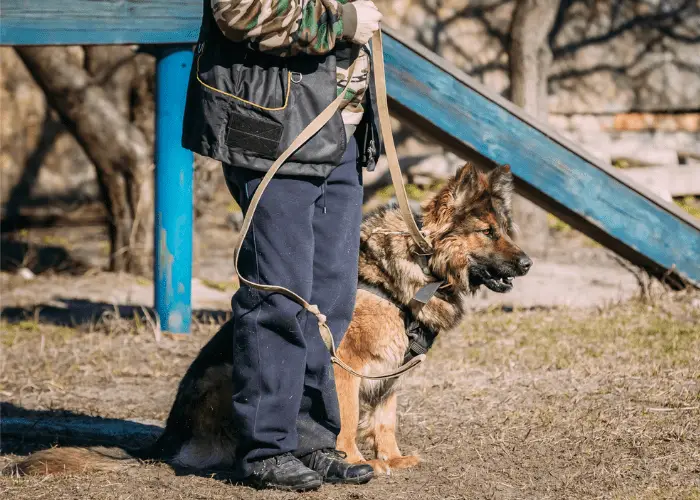
A dog trained to “heel” becomes more attentive and focused on the owner’s location—A means to get the dog to stand or walk with you rather than straying wherever it wants. Also, when your dog is walking or sitting by your heels, they are much easier to direct as you go.
3. “Sit” – Sitz (zitz)

Sitting is one of the most common dog commands because, for most owners, it’s the easiest to teach. This means reaching a calm and well-behaved mindset for your dog. The most popular training trick is to make your dog sit to receive a treat.
4. “Come” or “Here” – Hier (hee r)
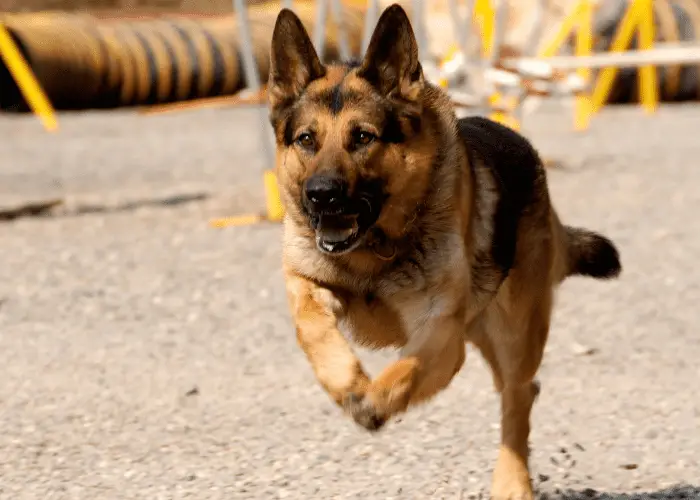
This command is another lifesaver. A dog that understands and obeys the “come” command can be directed against various troubles and dangers. But also, it is a command that you could use to help keep it under control for a walk or at the dog park (for a few easy examples).
5. “Down” – Platz (plats)
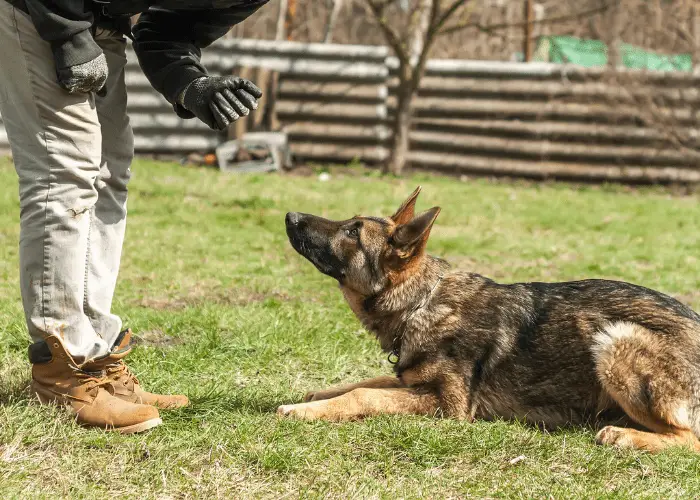
This word is commonly used by German dog trainers and is probably a shortened word representing “platz nehmen,” which means “take a seat.” Either way, this behavioral command instructs the dog to lay down or stay off things (like people and furniture). Owners with puppies will find themselves using this quite often.
6. “No” – Nein (nine)
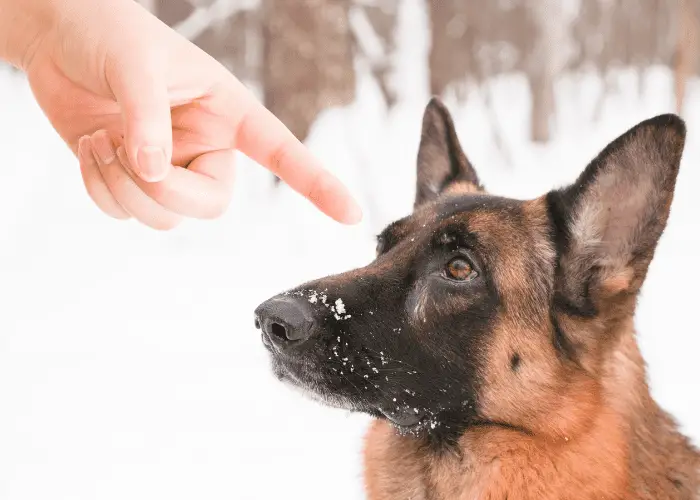
“No” or “nein”(pronounced like the English word “nine”) is an extremely common command, as most breeds try to push their limits with just about everything. The faster a dog can learn what “no” means, the easier it will be to train in the long run.
7. Fetch – Bringen (bringen)

Teaching a dog to fetch can be used for playtime (frisbees, balls, or sticks) or more practical uses if you’d like to tell your dog to go and get something.
8. “Stand” – Steh (sh tay)
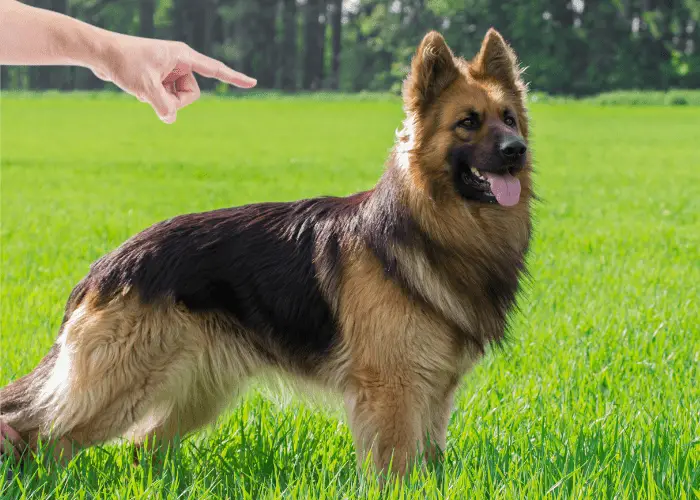
After teaching your dog to sit, teaching it to stand will assist the dog in understanding that it can get up and be prepared for whatever command you’d like to use next.
9. “Stop” – Halt (halt)
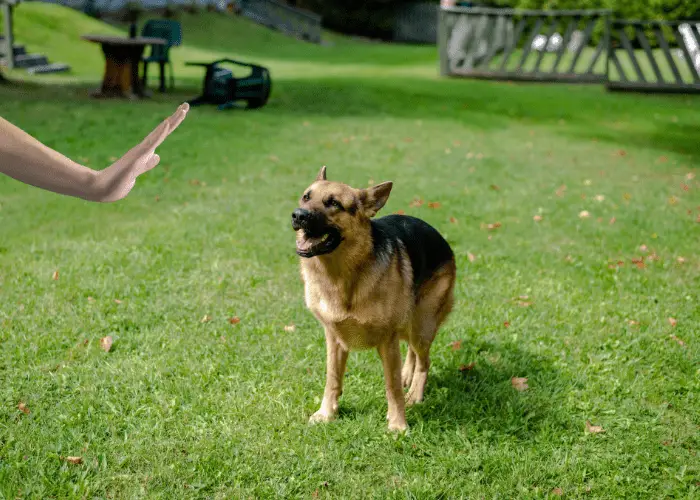
A great one to use if the dog is chasing a ball toward the road. “Stop” or “halt”(pronounced like the English word)is an essential command that could make a big difference in the well-being of your dog.
10. “Let Go/Out” – Aus (owss)

This one can work nicely with the “fetch” command. If your dog has retrieved something for you, it may not want to relinquish it willingly unless you tell it to “aus.”
11. “Go” – lauf (lowf)
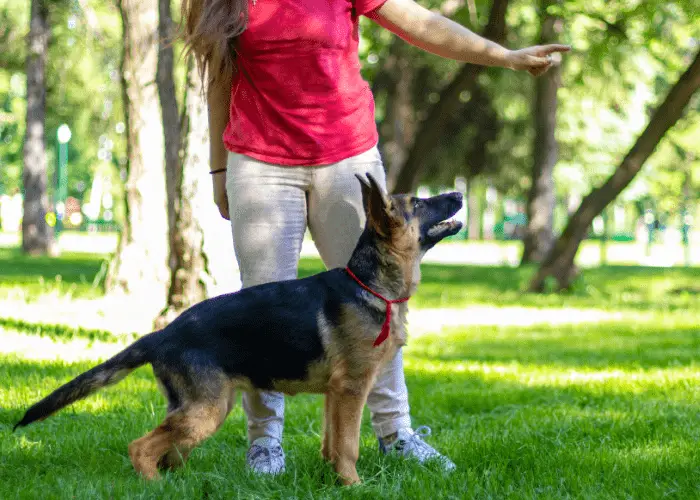
After you’ve commanded your dog to “stand,” you can follow up by telling it to go “lauf” in whatever direction you move toward.
12. “Jump” – Hopp (hup)
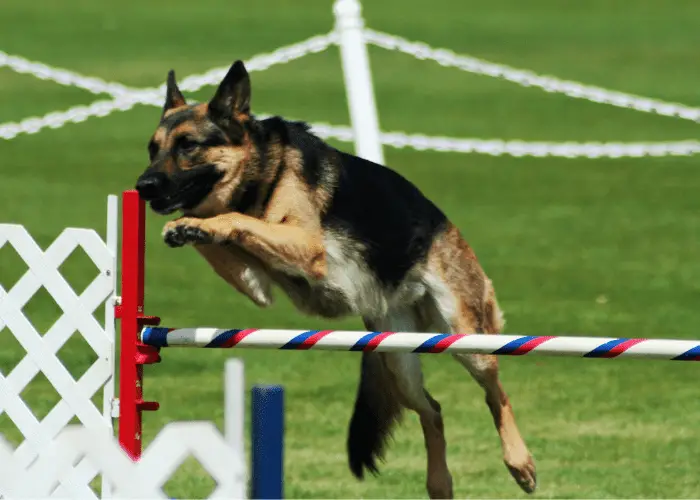
Teaching a dog to jump on command can help instruct your dog out on the trail for a walk or in play. Though it can be useful and fun, it isn’t as common as the other german training commands unless the dog is training for some competition.
13. “Speak” – Gib Laut (gib elowt)

Sometimes it’s fun to make your dog speak or bark for the food or treats, like a trick for a reward. However, speaking is most beneficial to let you know that it must go out to relieve itself!
14. “Quiet” – Ruhig (rooig)
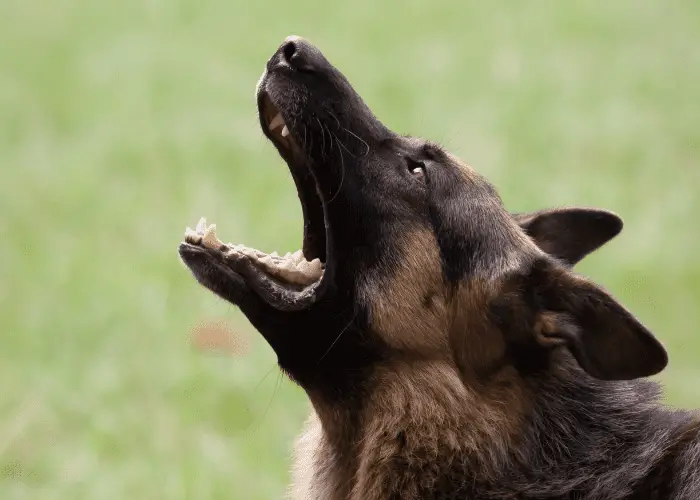
Sometimes it’s tough to hear yourself think if your dog is the type to bark at things you don’t want it to bark at. This is why it is handy to teach your dog to “ruhig.”
15. “Good” – So ist Brav (zo ist bra v) or “Good Dog” (Braver hund)

Every “good dog” (“braver hund” in German) likes praise. Positive reinforcement after completing a command is often helpful in encouraging a further willingness to be obedient and stay focused during training.
This is particularly effective for breeds naturally willing to please their owners.
16. “Don’t Do That” – Lass Das Sein (Los das sine)
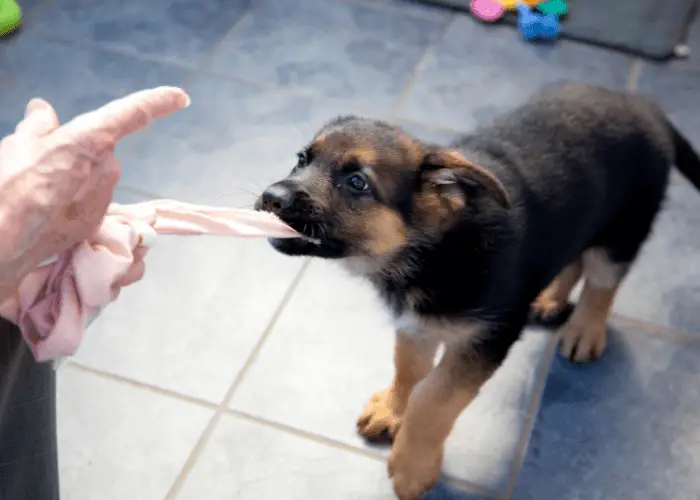
When training a dog, telling it what to do is a good part of the experience, but teaching it what not to do can’t be avoided. A consistent phrase like “don’t do that” can ward the dog from getting into things that it shouldn’t.
17. “Eat Food” – Nimm Futter (nim footr)
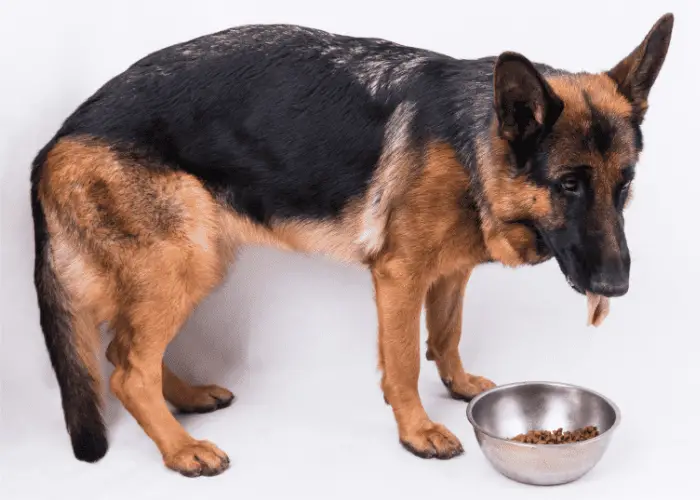
You’ve taught it to stay and sit; now, you can let it “eat food”. Letting your dog know when it can go to the bowl can be helpful. For example, unruliness can be trained in a hungry dog if they learn to wait for the command while the bowl is being filled.
7 Police & Military German Dog Training Commands
Note: All of the above german dog commands can apply to any working dogs, such as Police or Military dogs, so they won’t be repeated in the following list.
However, the same doesn’t apply in reverse.
Police or military working dogs need to know a bunch of commands that aren’t necessary for dogs to know as regular house pets.
Here are the german training dog commands specifically used toward dogs in the police force, military, or security-type positions.
1. “Attack or Take Hold” – Fass (fahs)
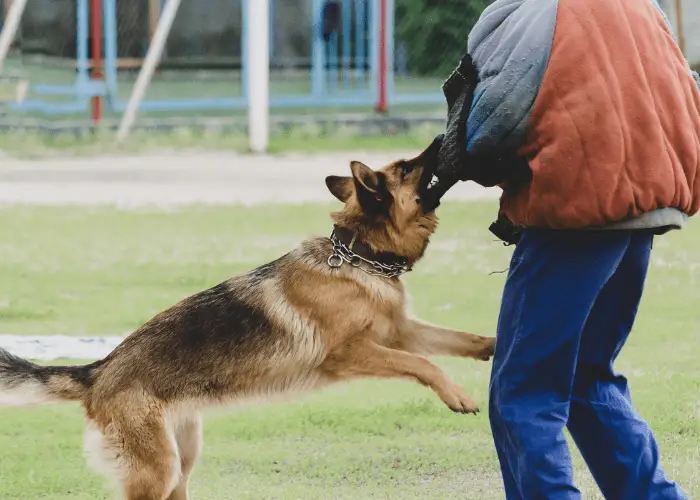
“Fass” comes from the German word fassen which means to hold of, grab or bite is commonly used when a perpetrator is becoming a threat to surrounding officers. A police dog’s greatest strength is to take a criminal down by latching on to the person until instructed to release. From there, the police can remove any weapons from arm’s reach and make an arrest.
2. “Watch, Beware, or Attention” – Pass Auf (pahs owf)
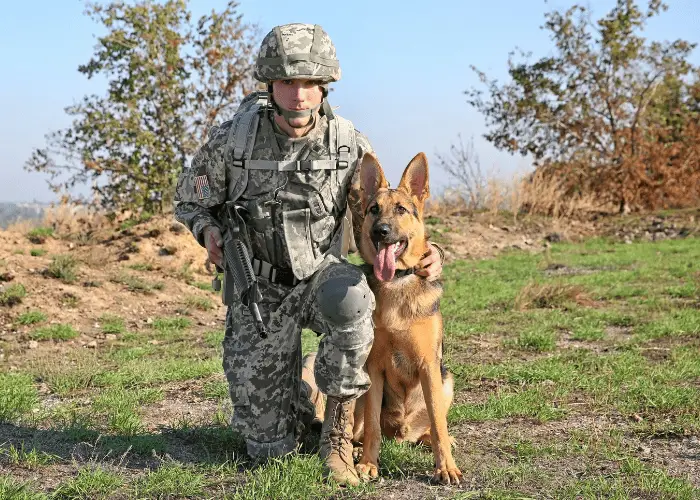
When a police dog needs to be switched on from a more casual nature to a focused and more intense manner during training sessions, police dogs are often placed in dangerous situations and must be aware of signs or scents of incoming trouble.
3. “Shame on you, Stop That” – Pfui (fooey)
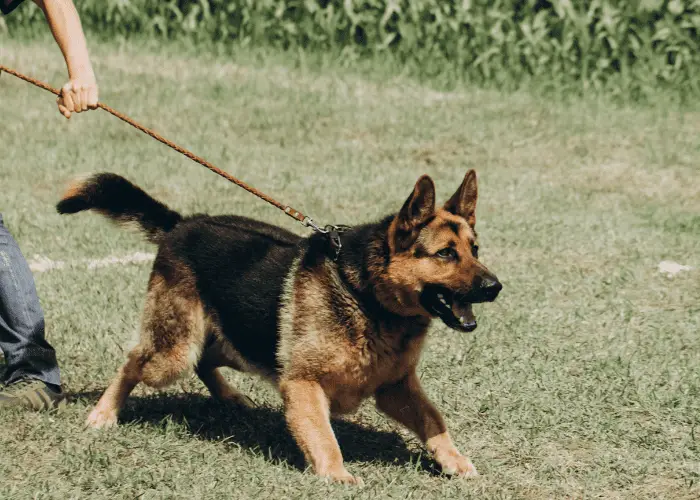
This is similar to the “no” (nein) command. However, this is more of a heat-of-the-moment command in comparison. In other words, you can teach a dog no and say it calmly or use it for relatively mundane things. “Pfui” for a police dog could save the dog’s life, fellow officers, or civilians.
4. “Go On, Blind Search” – Voran (For ahn)

This is used to train police dogs but is also used in competition. A blind search is when an object is stashed behind a blind for the dog to find and retrieve. This is one method to train dogs to be proficient in search or rescue situations.
5. “Go Forward or Go Out” – Voraus (for ows)

Dogs respond to this command by running to retrieve a visible target, often from a standstill or within a vehicle.
6. “Search” – Such (zook)
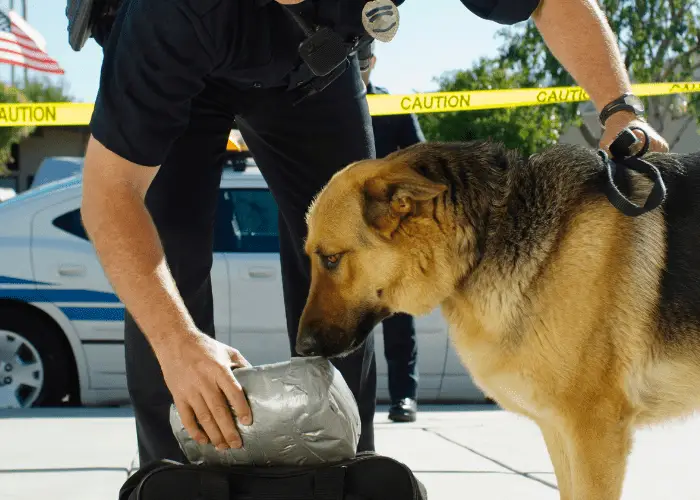
Searching for things is very important for sniffing and hunting dogs. Dogs that excel in a particular line of work will be trained to work on those strengths. Drug sniffing and search dogs are stapled positions occupied by breeds with a more powerful sense of smell than other breeds. However, searching by sight is also a training point for police dogs.
Specific search commands are- Article Search: Such Verloren and Find narcotics: Such Rauschgift.
7. “Watch or Pay Attention” – Achtung (ahk toong)
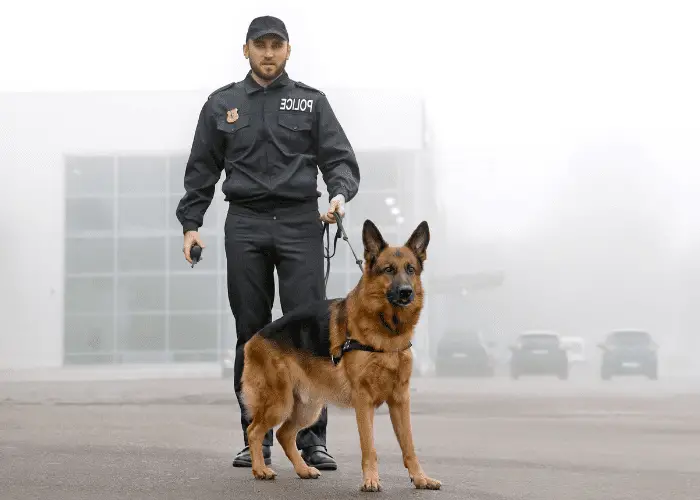
A police dog needs to be able to assess situations as they unfold calmly and is not always required to be at the end of its leash, striking fear into a criminal’s heart.
Some finesse is sometimes needed, and simple quiet and concentration might be necessary for the dog to hone in on something. This command will let the dog know it’s time to get to work and ignore certain things- like other dogs.
Why Do Police Dog Trainers Use Dog Commands in German?

There are a couple of answers to this question.
One reason is that most police dogs are purchased overseas (like the German Shepherds from Germany) and are taught in the native language of the country.
German Shepherd dogs are still among the most popular breeds for police work, but throughout the last couple of decades, the Belgian Malinois has proven to be just as effective- maybe a bit better in some areas.
Though many Malinois are trained in their native Dutch language, many breeders and outfits have adopted german dog training commands to provide a sort of uniformity. Though these two are the most popular choices for police work, others have come from Germany.
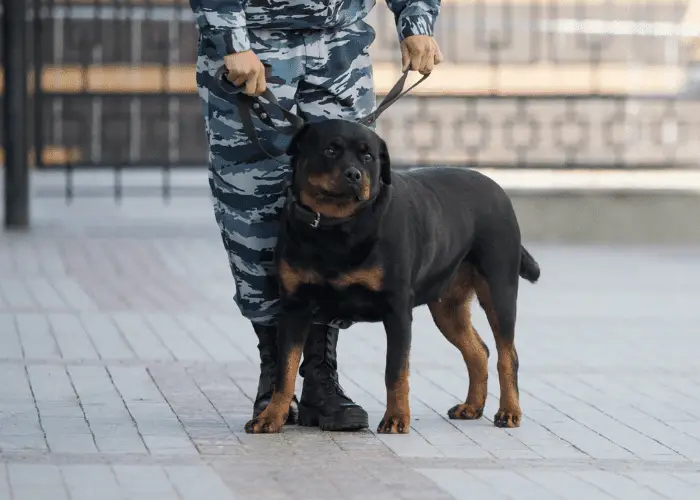
Boxers, Doberman Pinschers, Giant Schnauzers, German Shorthaired Pointers, and Rottweilers are all popular breeds of choice to accomplish different tasks under the Police Dog umbrella.
Another reason is that German is the most popular foreign language used to communicate with dogs. Police dogs are trained using German words to avoid confusion with daily vernacular. A unique set of german dog training commands between a dog owner (or fellow officer) and a police dog help the individual dog understands when it’s being spoken to and when it’s not.
Some command words can be downright dangerous if a k9 overhears them being brought up between a couple who might be having a simple conversation. Less confusion is also a bonus when out in the field in a confusing or busy situation.
Do Dogs Understand German Better than Other Languages?
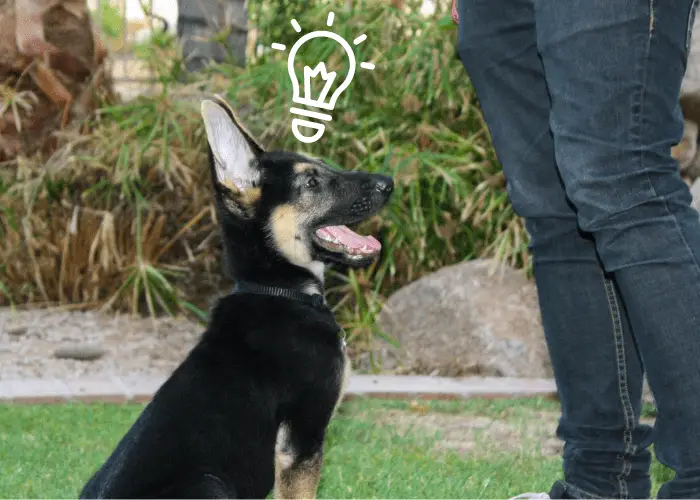
Dogs have a better chance of understanding whatever language they are used to hearing as they grow up. Whatever language used they’re trained to obey early in life will come the easiest to the dog.
The idea that dogs naturally better understand non-English commands like German than English is not true. That being said, the German dog commands are shorter, with a stronger emphasis on sounding different from one another.
So, it might be easier to train a dog using German because the shorter words will be more recognizable to the dog. The commands sound much different, assisting the dog in associating the right words with the right set of actions.
But they don’t naturally understand what’s being said without training. This is true no matter what popular language is being spoken.
Easier to train? Yes.
Do canines naturally favor it? No.
When You Should Start Training your Dog in German dog commands

Training in German can begin as soon as you get your puppy- as early as eight weeks. This isn’t any different than training any dog, as the earlier, the better is a rule of thumb.
Can an Old Dog Learn Commands in German?
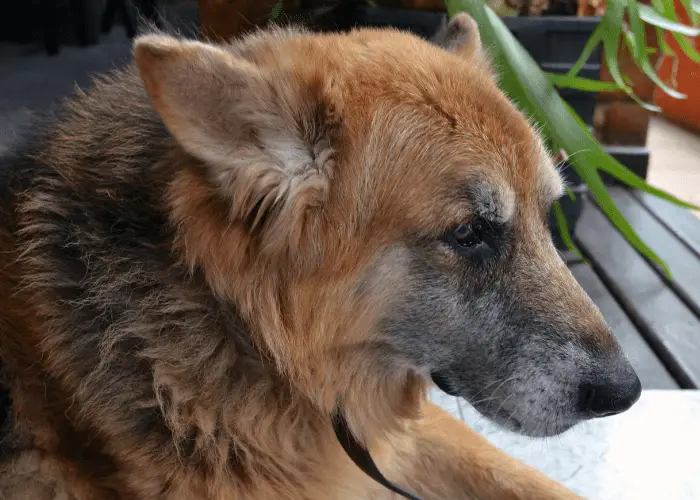
Though it is possible to train older dogs to one of the most popular foreign language commands like German, it will be a confusing experience for the dog. For that matter, how well would you do if someone started telling you what to do in a foreign language?
Probably not too reasonably, so don’t expect much more than that from a dog trained in a different language than German.
But new commands can be a new introduction to your dog. If you taught your older dog something in German wouldn’t be any more challenging or easier than it would be in English or whatever foreign language it’s been trained in.
Despite the “old dog new tricks” cliché, it is possible to teach an older dog new tricks and teach them to the dog in German. It will take longer, about four weeks or so, than a younger dog.
Because of that, it will require a lot of patience on the dog owners’ part and more consistency and dedication to the training.
Using German Dog Command with Hand Signal
Using visual cues like hand signals or gestures alongside their commands can be beneficial to make things a little easier for you and the dog being trained. They will associate the two when hand signals are used with a verbal command.
Eventually, your furry friend will understand what you want it to do from observing the gesture without hearing the verbal communication. Dogs pay attention to what’s going on with our hands.
Here are some great examples to show this at work…
1. “Sit”- Open your hand, palm up or parallel to the floor.

2. “Stay” Hand up, fingers closed.

3. “Down” –Palm facing the ground.
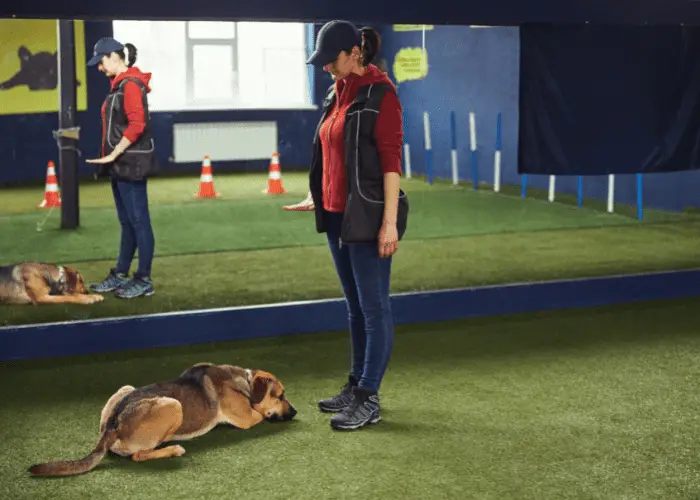
4. “Stand”- Palm facing up and raise your hand.
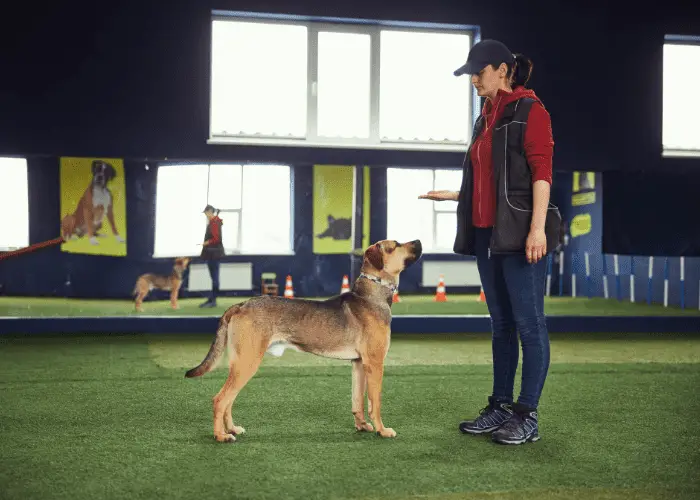
If you have a ball in your hands, your dog might get excited knowing it will get some play-in. It watches you throw it repeatedly and chases it every time. But what will the dog do if you fake throw the ball and keep it in your hands?
The dog will probably take off for the ball as if you threw it. It knows the gesture is meant to launch that ball, so when you wind up, it expects there to be a ball to chase, whether there is one or not.
The same idea works to our advantage when it comes to training commands. The command is taught along with a gesture, and the dog performs that command (after training) with or without the verbal, as the dog in the example chased for the ball with or without the ball.
Final Thoughts

Someone simply trying to use a command in a different language to become a more obedient and well-behaved pet will need a different set of commands than someone raising a guard or police dog.
This should be a piece of cake if you already speak a few German words, but it’s going to be assumed that if you’re here- you don’t.
You don’t need to train your pup in German to yield good results. However, not only is it a learning experience for those who don’t naturally speak German, but it is an excellent way to be more specific with your commands and have a clear, separate means of communication between you and your “best friend.”
Related Questions:
What are the 7 Essential Commands to Teach Your Dogs?
You can teach your dog all kinds of tricks and commands throughout the dog’s life. However, there are seven that are essential. Essential because they will make your life easier with the dog and the dog’s life easier navigating through your expectations.
Sit, Stay, Heel, No, Come, Off, and Down are seven crucial commands to help you with your puppy.
These are all basic commands for pet dogs that are easier to understand than others but that you’ll find yourself using throughout the early months of your dog’s life. After your furry friend understands these commands, others can trickle in over time.
All of these commands can be found in the “Most Common German Commands for Any Dog” section if you wish to use any of these commands in German.
Check Other Dog Commands in Different Languages Below:

